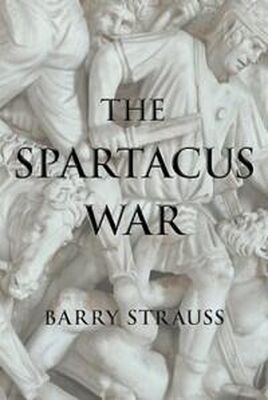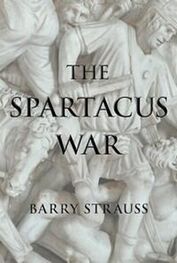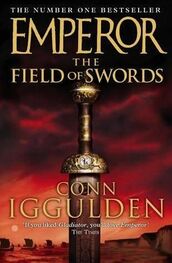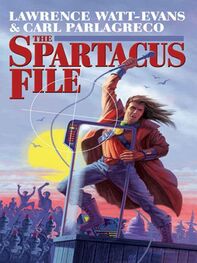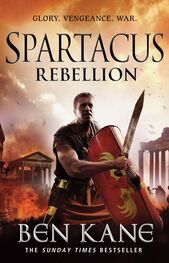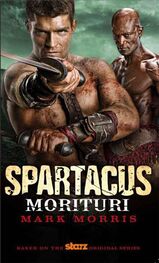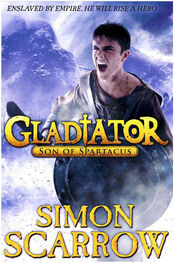Laura Battastini argues that Spartacus’s battle with Lentulus took place in the northern Tuscan Apennines near the village of Lentula: Lentula La dinastia dei Lentuli Corneli, la guerra di Spartaco e la storia di antichi villaggi dell’Appennino Tosco Emili ano, 2nd edn (Restignano Italy: Editografica, 2000). R. Luongo opens a window into the journey of Spartacus’s army in the region of the Picentini Mountains: R. Luongo, ‘L’esercito di Spartaco nella regione dei Monti Picentini’, Rassegna Storica Salernita 42, n.s. 21.2 (2004): 21-32. E. Greco’s study of Spartacus on the Strait of Messina is illuminating if unconvincing: E. Greco, Spartaco sullo stretto ovvero Le origini di Villa San Giovanni e Fiumara di muro (Rome: Gangemi Editore, 1999).
Domenico Raso offers a plausible theory of Crassus’s military works in the Aspromonte Mountains in Domenico Raso, ‘TIN-NARIA: Antiche opere militari sullo Zomaro’, Calabria sonosciuta 37 (January-March 1987): 79-102, and Domenico Raso, Zomaro: La montagna dei sette popoli, tra i misteri della montagna calabrese (Reggio di Calabria: Laruffa, 2001).
On Roman roads, see Raymond Chevallier, Roman Roads, trans. N.H. Field (Berkeley and Los Angeles: University of California Press, 1976); Ray Laurence, The Roads of Roman Italy: Mobility and Cultural Change (London and New York: Routledge, 1999); Romolo Agosto Staccioli, The Roads of the Romans (Rome: ‘L’Erma’ di Bretschneider, 2003); Ivana della Portella, Giuseppina Pisani Sartorio, Francesca Ventre, The Appian Way from its Foundation to the Middle Ages, trans. from the Italian (Los Angeles: J. Paul Getty Museum, 2004) and A.R. Amarotta, ‘La Capua-Reggio (e il locus Popilli) nei pressi di Salerno’, Atti della Accademia Pontaniana XXXIII (1984): 289-308.
A brief but valuable introduction to the archaeological evidence for Spartacus’s revolt is found in A. Russi, ‘La romanizzazione: il quadro storico’, in Dinu Adamesteanu, ed., Storia della Basilicata, vol. 1: L’Antichita‘ (Rome: Editori Laterza, 1999), 531-7, and in the same volume, A. Small, ‘L’occupazione del territorio in eta‘ romana’, 577. For the coin hoard buried at Siris, see A. Siciliano, ‘Ripostiglio di monete repubblicane da Policoro’, Annali dell’ Istituto Italiano di Numismatica XXI-XXII (1974-5): 103-54. For the treasure buried at Palmi, in an olive grove 25 miles north of Cape Caenys, see P.G. Guzzo, ‘Argenteria di Palmi in ripostiglio’, Atti e memorie della Societa‘ Magna Grecia 18-20 (1977-9): 193- 209.
On tattooing in Greece and Rome, see C.P. Jones, ‘Stigma: Tattooing and Branding in Graeco-Roman Antiquity’, Journal of Roman Studies 77 (1987): 139-55. On tattooing in Thrace, see A. Mayor, ‘People Illustrated’, Archaeology 52.2 (March/April 1999): 54-7.
The best introduction to crucifixion and the Romans is M. Hengel, Crucifixion in the Ancient World and the Folly of the Message of the Cross (Philadelphia: Fortress Press, 1977). For a concise overview, see Haim Cohn and Shimon Gibson, ‘Crucifixion’, Encyclopaedia Judaica, 2nd edn, vol. 5, Michael Berenbaum and Fred Skolnik, eds. (Detroit: Macmillan Reference USA, 2007): 309-10, or J.J. Rousseau and Rami Arav, ‘Crucifixion’, Jesus and his World: An Archaeological and Cultural Dictionary (Philadelphia: Fortress Press, 1995): 74-8. On the evidence of material culture, see J. Zias, ‘Crucifixion in Antiquity, the Anthropological Evidence’, www.joezias.com/CrucifixionAntiquity.html, and J. Zias and E. Sekeles, ‘The Crucified Man from Giv’at ha-Mivtar: A Reappraisal’, Israel Exploration Journal 35 (1985): 22-7. On medical questions regarding crucifixion, see M.W. Maslen and Piers D. Mitchell, ‘Medical Theories on the Cause of Death in Crucifixion’, Journal of the Royal Society of Medicine 99 (2006): 185-8.
For a stimulating if speculative theory about the enduring, Celtic way of war, see G. McWhiney, Attack and Die. Civil War Military Tactics and the Southern Heritage (University of Tusca loosa: University of Alabama Press, 1981).
In citing ancient authors, I follow the abbreviations of the standard reference work, The Oxford Classical Dictionary 3rd edn (Oxford: Oxford University Press, 1999). I cite the titles of ancient works, however, in English translation. References to the fragments of Sallust’s Histories come from the following edition unless otherwise stated: B. Maurenbrecher, C. Sallusti Crispi Historiarum Reliquae. Vol. II: Fragmenta (Leipzig: Teubner, 1893).
(I’ve moved notes to appropriate places — Xitsa)
Chapters of this manuscript were read by and greatly improved through the comments of Kimberly Bowes, Judith Dupré, Mark Levine, Adrienne Mayor, Marcia Mogelonsky, Jan Parker, Matthew Sears and Chaya Rivka Zwolinski. Many Cornell colleagues and students, past and present, offered advice and answered specific questions. I would like to thank in particular Annetta Alexandridis, Edward Baptist, Flaminia Cervesi, Nora Dimitrova, Michael Fontaine, Kathryn Gleason, Harry Greene, Martin Loicano, Elizabeth Macaulay-Lewis, Kathryn McDonnell, Mich elle Moyd, Jon Parmenter, Eric Rebillard, Sidney Tarrow, Robert Travers, Rachel Weil and Michael Weiss. I would also like to thank Josh Bernstein, Anna Kirkwood, Kim McKnight, Josiah Ober, Priya Ramasabban, Philip Sabin and Rob Tempio.
I am deeply grateful to my two academic homes at Cornell University, the Department of History and the Department of Classics. The superb collection and the supportive staff of Cornell’s John M. Olin Library helped make this book possible. I benefited from the comments received when I read portions of my manuscript at Cornell’s Ancient Mediterranean Colloquium, Cornell’s Peace Studies Seminar, and at the Duke-UNC Graduate Colloquium.
I was lucky enough to make several research trips to Italy. Among those who helped me there are Carmine Cozzolino, Marcella DeFeo, Umberto Del Vecchio, Maria Laura Frullini, Donato Punello and Marcello Tagliente. Jim Zurer provided expert travel advice.
As in the past, Suzanne Lang provided invaluable secretarial and logistical assistance. Barbara Donnell, Michael Strauss and Sylvie Strauss helped with typing.
I am greatly indebted to my editor at Simon & Schuster, Bob Bender, whose sage advice improved the manuscript thoroughly. I would also like to thank his assistant, Johanna Li. I am greatly indebted as well to my editors at Weidenfeld & Nicolson, Alan Samson and Keith Lowe, for their perceptive and productive reading of the manuscript. My literary agent and friend, Howard Morhaim, first suggested that I write about Spartacus.
My family is the true sine qua non of this book. I thank Sylvie and Michael for their support and patience and Marcia for more than I can say.
George Wood, my former student and friend, fell in Iraq in 2003. George was planning a career as a Roman historian. It is impossible for me to write about Rome without remembering him.
Josiah Ober and Adrienne Mayor have always been there, as friends and colleagues, for thirty years. Dedicating this book to them is but small recompense.
Abella (Avella)
Achaicus, Lucius Mummius
Aciris (Agri) River valley
Aetna (Etna), Mount
Agri Picentini
Agri (Aciris) River valley
Alburni Mountains
Alexander Jannaeus, king of Judaea
Alexander the Great
Allia, Battle of the (390 BC)
Alps
Amarantus
Anatolia
Antonius
Antony, Mark aunt of
Apennine Mountains
battle in
community of maroons (runaways)
Apollo
Apollonia (San Fratello)
Apollonius
Appian Way
Apulia (Puglia)
Aquilius, Manius
Читать дальше